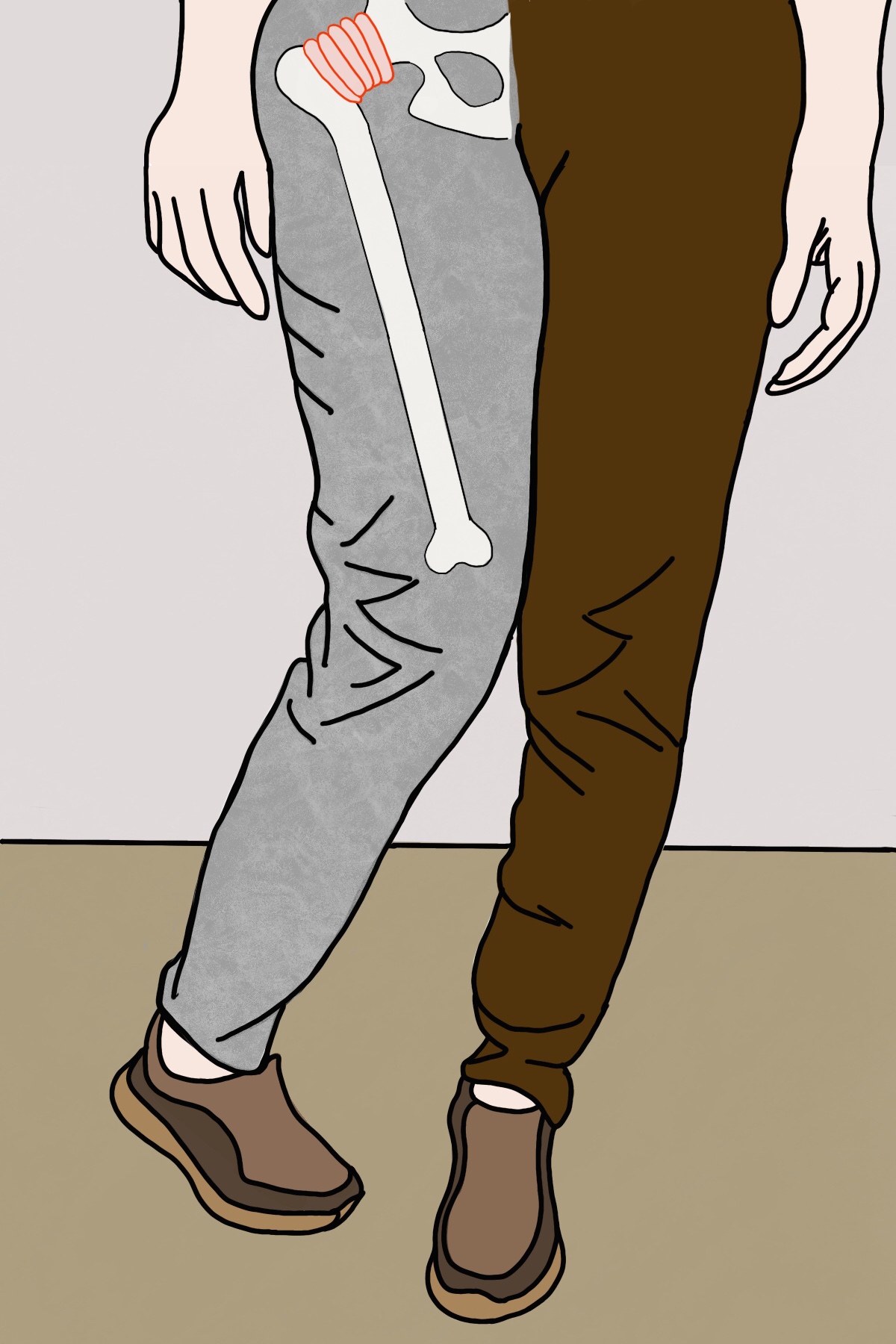Adaptive Devices for Activities of Daily Living (ADL) in Elderly after Hip Fracture
Main Article Content
Abstract
Hip fractures are more common in the elderly. After surgery, the elderly have limitations in doing various activities, especially Activities of Daily Living (ADLs). Adaptive devices are used to assist in completing ADLs after surgery such as a long sponge stick used to prevent bending over while showering, dressing stick, shoehorn, etc. Besides, adaptive devices can increase self-confidence, safety and reduce anxiety among patients and caregivers. Nowadays, adaptive devices are easy to buy at an inexpensive price. Also, there are the innovations of adaptive devices that facilitate the patient to do the activities of daily living such as home electrical control devices, and the proactive innovation that reduces the incidence of hip fracture.
Article Details
References
2.Eakwirojanasakul J. Refracture Prevention in Elderly Patients with Previous Hip Fracture in Somdejprasangkharach 17th Hospital, Suphanburi. Region 4-5 Medical Journal. 2019;38(1):39-49.
3. พฤกษ์ ไชยกิจ. กระดูกข้อสะโพกหักในผู้สูงอายุ[อินเตอร์เน็ต]. 2563 [เข้าถึงเมื่อ 11 ธ.ค 2563]. เข้าถึงได้จาก:https://www.praram9.com/articles/%E0%B8%81%E0%B8%A3%E0%B8%B0%E0%B8%94%E0%B8%B9%E0%B8%81%E0%B8%82%E0%B9%89%E0%B8%AD%E0%B8%AA%E0%B8%B0%E0%B9%82%E0%B8%9E%E0%B8%81%E0%B8%AB%E0%B8%B1%E0%B8%81%E0%B9%83%E0%B8%99%E0%B8%9C%E0%B8%B9%E0%B9%89/
4. Coleman S. Hip fracture and lower extremity joint replacement. In Pedretti LW, Early MB, editor. Occupational therapy: practice skill for physical dysfunction. St Louis, MO: Mosby; 2001: 867-78.
5. Lee SY, Jung SH, Lee SU, Ha YC, Lim JY. Is occupational therapy after hip fracture surgery effective in improving function?: A systematic review and meta-analysis of randomized controlled studies. American journal of physical medicine & rehabilitation. 2019;98(4):292-8.
6. Hagsten B, Svensson O, Gardulf A. Early individualized postoperative occupational therapy training in 100 patients improves ADL after hip fracture A randomized trial. Acta Orthopaedica Scandinavica. 2004;75(2):177-83.
7.Pol M, Peek S, van Nes F, van Hartingsveldt M, Buurman B, Kröse B. Everyday life after a hip fracture: what community-living older adults perceive as most beneficial for their recovery. Age and ageing 2019; 48:440-7.
8.Rogmark C, Jobory A, Unger O, Nilsson I, Dahlqvist L. Post-discharge use of assistive devices following hemiarthroplasty: comparison of fracture patients with or without hip precautions. Disability and Rehabilitation: Assistive Technology. 2019;14:792-7.
9.ไพรัช ประสงค์จีน. กระดูกหักและข้อเคลื่อน (Fracture and dislocation). กรุงเทพฯ: โรงพิมพ์แห่งจุฬาลงกรณ์มหาวิทยาลัย พิมพ์ครั้งที่ 4 ฉบับเพิ่มเติม 2552.
10.Sturnieks DL, St George R, Lord SR. Balance disorders in the elderly. Neurophysiologie Clinique/Clinical Neurophysiology. 2008;38(6):467-78.
11.วิไล คุปต์นิรัติศัยกุล. บทบาทของเวชศาสตร์ฟื้นฟูในโรคกระดูกพรุน. ใน:กุลภา ศรีสวัสดิ์. บรรณาธิการ. เวชศาสตร์ฟื้นฟูในปัญหาที่พบบ่อย.กรุงเทพฯ สำนักพิมพ์ศิริราช คณะแพทยศาสตร์ศิริราชพยาบาล มหาวิทยาลัยมหิดล 2561:257.
12.National Institute for Health and Care Excellence (Great Britain). Osteoporosis: assessing the risk of fragility fracture. National Institute for Health and Care Excellence (NICE); 2017.
13.ชาญยุทธ ศุภชาติวงศ์. กระดูกหักและข้อเคลื่อนที่สะโพกและต้นขา (Fracture and dislocation of the hip and fracture femur). ใน: วิวัฒน์ วจนะวิศิษฐ, ภัทรวัณย์ วรธนารัตน์, ชูศักดิ์ กิจคุณาเสถียร, สุกิจ เลาหเจริญสมบัติ, สรศักดิ์ ศุภผล. บรรณาธิการ. ออร์โธปิดิกส์: ฉบับเรียงเรียงใหม่. พิมพ์ครั้งที่ 3. กรุงเทพฯ: โฮลิสติก พับบลิสชิ่ง; 2550:165-80.
14.Lareau C, Sawyer G. Hip fracture surgical treatment and rehabilitation. RHODE ISLAND. 2010;93:4.
15.สุปราณี เชื้อสุวรรณ. การพยาบาลผู้ป่วยผ่าตัดใส่ข้อสะโพกเทียม. ใน: วรรณี สัตยวิวัฒน์. การพยาบาลผู้ป่วยออร์โธปิดิคส์. พิมพ์ครั้งที่5.ไพศาลศิลป์การพิมพ์. กรุงเทพ. 2539:381-82.
16.The Ottawa hospital. Patient information Fracture hips [Internet]. [updated: 2016 May; cited 2021 Jan 10]. Available from: https://www.ottawahospital.on.ca/en/documents/2017/01/cp03b-fractured-hip-english-april-2016.pdf/
17.พิศักดิ์ ชินชัย. การฝึกด้านกิจวัตรประจำวัน (ADL Training). ใน: พิศักดิ์ ชินชัย, ทศพร บรรยมาก,ปิยะวัฒน์ ตรีวิทยา.บรรณาธการ. กิจกรรมบำบัดสำหรับผู้มีปัญหาด้านระบบประสาท. ครั้งที่4. สยามพิมพ์นานา จำกัด.เชียงใหม่. 2560:120-21.
18. Ibrahim NI, Ahmad MS, Zulfarina MS, Zaris SN, Mohamed IN, Mohamed N, Mokhtar SA, Shuid AN. Activities of daily living and determinant factors among older adult subjects with lower body fracture after discharge from hospital: a prospective study. International journal of environmental research and public health. 2018;15(5):1002.
19.เกษร จรรยารัตน์, ศรีนวล สถิตวิทยานันท์, วรรณี สัตยวิวัฒน์. ตัวชี้วัดคุณภาพด้านผลลัพธ์ทางการ พยาบาลสำหรับผู้ป่วยกระดูกสะโพกหักที่เปลี่ยนข้อสะโพกเทียม. วารสารความปลอดภัยและสุขภาพ. 2016;31:45-56.
20. Miskelly FG. Assistive technology in elderly care. Age and ageing. 2001;30:455-8.
21. Patricia A Quigley, Wamis Singhatat, Rebecca J Tarbert. Technology innovation to protect hips from fall-related Fracture. Phys Med Rehabil Res. 2019:1-4.
22.Visutsak P, Daoudi M. The smart home for the elderly: Perceptions, technologies and psychological accessibilities: The requirements analysis for the elderly in Thailand. In 2017 XXVI International Conference on Information, Communication and Automation Technologies (ICAT) 2017:1-6.






